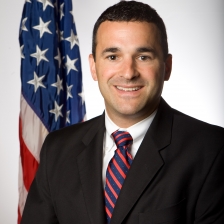
The fiscal chopping block: How programs are saved, sliced in the federal budget
President Barack Obama in February presented his eighth and final budget, which includes a list of programs he'd like to see reduced or ended. How and why do...
When President Barack Obama unveiled the eighth and final budget of his administration, it looked very different from the one he first presented in 2009.
In fiscal 2010 an emphasis was placed on climbing out of a recession and reversing unemployment. This year there’s a focus on national security and cybersecurity, as the country engages in battles overseas and online.
Sure, both were thick as phone books, but each — along with the other six budgets between fiscal 2011 and 2016 — reflected a different shift in the priorities of the President, politicians and the public.
Within each of these eight documents was a list of terminations and reductions. Every President’s budget has included a roster of the programs, funds, scholarships and grants that have been sentenced to the chopping block. And therein lies the complex bartering-balancing act between the President and Congress.
“I can assure you there’s no single explanation for why stuff tends to happen,” said Danny Werfel, former Office of Management and Budget controller. “Invariably, there’s a good reason and a good policy behind what comes out in the budget. A lot of thought goes into how to make all of those pieces fit together.”
Requested, enacted
The past eight lists of cuts and reductions each contained around 100 programs. Some have made the list once or twice in the past two terms, but a handful have been sent to the chopping block every — or nearly every — year.
A few examples include the Rural Community Facilities and Health Care Services Grant programs, Harry S. Truman Scholarship Fund and the State Criminal Alien Assistance program — with justifications for their cuts ranging from duplicative programs to alternative funding sources.
| Harry S. Truman Scholarship Foundation (in millions) | ||||||||
| YEAR | FY10 | FY11 | FY12 | FY13 | FY14 | FY15 | FY16 | FY17 |
| Requested | 0 | 0 | 0 | 0 | 0 | 0 | 0 | 0 |
| Enacted | 1 | 1 | 1 | 1 | 1 | 1 | 1 | TBD |
| Health Care Services Grant Program (USDA) | ||||||||
| YEAR | FY10 | FY11 | FY12 | FY13 | FY14 | FY15 | FY16 | FY17 |
| Requested | NA | 0 | 0 | 0 | 0 | 0 | 0 | 0 |
| Enacted | 3 | 3 | 3 | 3 | 3 | 3 | 3 | TBD |
| Rural Community Facilities(HHS) | ||||||||
| YEAR | FY10 | FY11 | FY12 | FY13 | FY14 | FY15 | FY16 | FY17 |
| Requested | 0 | 0 | 0 | 0 | 0 | 0 | 0 | 0 |
| Enacted | 10 | 10 | 5 | 5 | 6 | 7 | 7 | TBD |
| State Criminal Alien Assistance Program (DOJ) | ||||||||
| YEAR | FY10 | FY11 | FY12 | FY13 | FY14 | FY15 | FY16 | FY17 |
| Requested | 0 | 330 | 136 | 70 | 0 | 0 | 0 | 0 |
| Enacted | 330 | 330 | 240 | 240 | 180 | 185 | 210 | TBD |
As Werfel explained it, there are multiple factors for what gets to stay and what is removed from a budget. The impact of a program, how well it’s working or how impactful it might be, all get weighed because, “You can’t pay for everything.”
“The OMB examiners, one of their core responsibilities, is to understand the efficacy of these programs and activities,” Werfel said. “Not every program is looked at with the same level of scrutiny, but every program is looked at, justified and explained.”
Examiners consider how the program works, its design as well as its impact, whether there are any structural issues, as well as the priorities of the administration.
“If you think about what a budget is, it’s a debate about priorities,” said Shelley Metzenbaum, former associate director for personnel and performance at OMB.

What gets put on the chopping block, she said, is determined by “both changes in a single President’s priorities over time, as well as changes of priorities between Presidents. It’s much more the latter than the former, but it can also be the former,” she said. “Programs that actually don’t work and where there’s enough feeling that they don’t work, or nobody knows if they don’t work, there’s a real reluctance if they are funding them.”
Werfel said sometimes de-prioritizing might happen not because something isn’t a priority, but rather it’s a duplicative program.
Once the administration irons out its priorities, the budget is published and sent to Congress for consideration.
“There’s kind of a different mix of consideration from the congressional side,” Werfel said. “It’s not a complete apples to oranges, but it’s different.”
White House and Congress ‘part of this dance’
Similar to the executive side of things, lawmakers look at programs to see what is underperforming and what’s working. But things can get complicated.
There might be a program that the administration wants defunded, but if there’s a champion for it in Congress or lobbyists are backing it, that program might make the cut.
An example of this would be an education program proposed for a certain amount of funding, Werfel said. The President might be 100 percent committed to education, but the administration is reshaping the education funding by eliminating a longstanding education program in exchange for focusing dollars on a new program or other priority which the administration thinks could be a better investment.

Congress could say there’s not enough information about the new program, while political undertones color the budget battle, Werfel said.
Perhaps there’s “a set of stakeholders that have kind of called this to the attention of Congress, who saw the President’s budget looking to cut this program but [they] have a bunch of teachers signing letters saying this program is making a difference to people,” he said.
Daniel Mitchell, a Cato Institute senior fellow who specializes in fiscal policy, told Federal News Radio in an email that the driving force behind annual appropriations is how fast overall spending is supposed to increase.
“If there is any sort of overall fiscal discipline [such as the Budget Control Act], then the various spending constituencies have to fight each other, at least indirectly,” Mitchell said. “The White House and Congress are part of this dance, both as recipients of lobbying pressure and as advocates for various constituencies. So you get a dance that lasts most of the year as everyone engages in strategic negotiations [oftentimes with the possibility of so-called emergency and supplemental spending as an explicit or implicit part of the conversation].”
Sometimes what Congress might be rejecting is not just the funding level going up or down, but it’s connected to the broader rejection of reforms.
“At the end of the day, the only way to truly judge what the politicians care about is to see which programs get big increases, which ones get small increases and which ones actually have their budgets reduced,” Mitchell said.
After the scrutiny, debate and negotiation, the budget is enacted and the process begins again for the following fiscal year.
“It’s really great, it’s really inspiring,” Werfel said. “Really substantively analyzing all of these different investment paths, it’s not an easy answer. But when it works out, it’s such a great feeling.”
Copyright © 2025 Federal News Network. All rights reserved. This website is not intended for users located within the European Economic Area.





